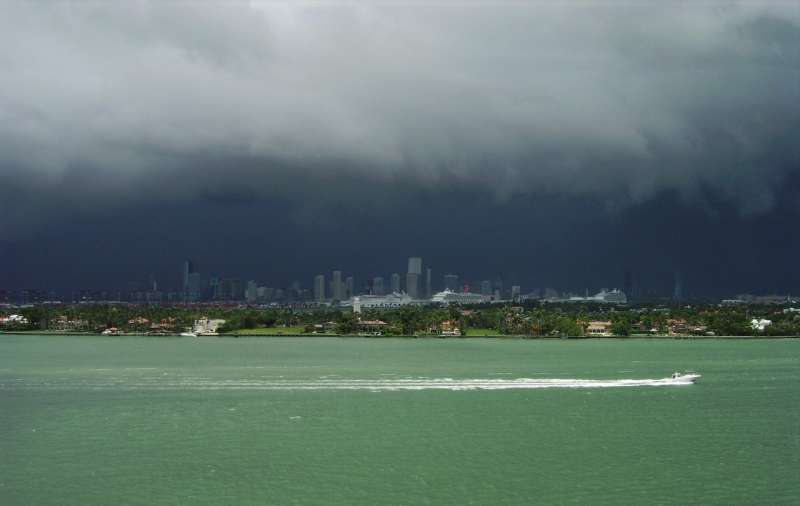Urban growth leads to shorter, more intense wet seasons in Florida peninsula

New research from Florida State University scientists has found that urban areas throughout the Florida peninsula are experiencing shorter, increasingly intense wet seasons relative to underdeveloped or rural areas.
The study, published in the journal npj Climate and Atmospheric Science, provides new insight into the question of land development's effect on seasonal climate processes.
Using a system that indexed urban land cover on a scale of one to four—one being least urban and four being most urban—the researchers mapped the relationship between land development and length of wet season.
"What we found is a trend of decreasing wet-season length in Florida's urban areas compared to its rural areas," said Vasu Misra, associate professor of Earth, Ocean and Atmospheric Science and lead investigator of the study.
According to Misra's research, changing land cover over the past 40 to 60 years has resulted in a decrease in wet-season length by 3.5 hours per year in Florida's most urban areas compared to its most rural areas.
However, the linear trends of seasonal rainfall accumulation over that same period were found to have remained relatively stable across Florida's diverse land cover regions.
"In other words," Misra said, "the urban areas experience the same amount of rainfall as the rural areas but in a shorter amount of time. Therefore, the hourly rain rate is stronger in urban regions. This suggests that urban areas are receiving the rainfall in shorter, more intense bursts—particularly during the summer months."
This study adds to a growing body of research supporting the contention that urbanization and changing land cover in rapidly developing areas can directly affect local climatological systems. Previous research has found that factors such as increased surface temperature, roughness of urban land cover and abundant aerosols in urban areas can all influence rainfall rates.
Misra's findings demonstrate the symmetry between trends in increased urbanization and abbreviated wet seasons.
"The strong relationship between land cover and these trends in rainfall seems to suggest that land cover has everything to do with changing wet seasons," Misra said. "I think this has some very strong implications for urban planning in Florida as well as for Florida's hydroclimate."
While researchers have not yet determined precisely why urban areas are experiencing progressively shorter and more intense wet seasons, they do have their suspicions.
Some researchers posit that in urban areas shorn of vegetation, rain that would otherwise be recycled into the atmosphere as evaporation is carried away as runoff. Others have observed that thunderstorms approaching urban areas are often split and made more diffuse by disruptive circulation from developed land cover.
Researchers have also noted that warmer temperatures in urban regions lead to higher concentrations of water vapor in the air column, which could result in more intense episodes of rainfall as that water is squeezed from the atmosphere.
"We have theories," Misra said, "but whether those theories are actually representative of what's happening in nature has not been investigated intensively in the context of what we are observing in Florida. We don't have enough data available at our disposal."
Whatever the cause, Misra's study suggests that sustained rates of urban growth in Florida's metropolitan areas will mean even shorter and more intense wet seasons in the future.
FSU researchers Akhilesh Mishra and Amit Bhardwaj also contributed to the study, along with Krishnan Viswanthan from Cambridge Systematics Inc. and Dan Schmutz from Greenwood-Pederson Inc. This research was funded by the National Oceanic and Atmospheric Administration and the South Florida Water Management District.
More information: Vasubandhu Misra et al, The potential role of land cover on secular changes of the hydroclimate of Peninsular Florida, npj Climate and Atmospheric Science (2018). DOI: 10.1038/s41612-018-0016-x
Provided by Florida State University





















